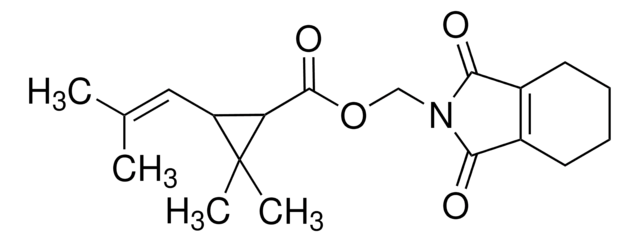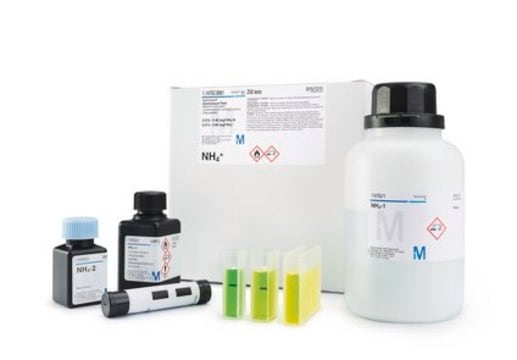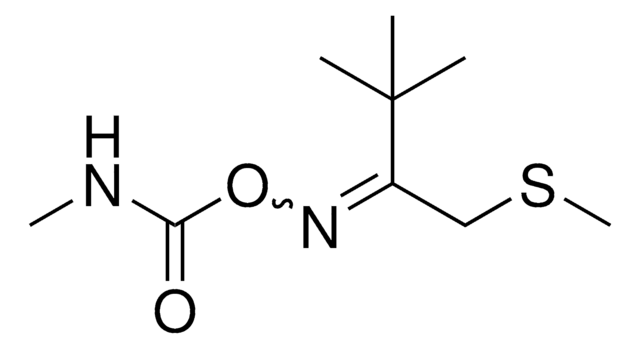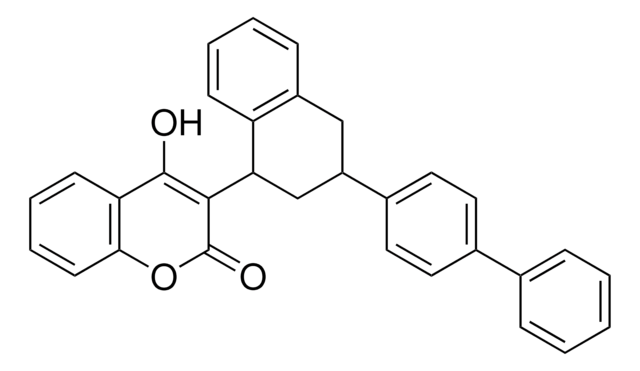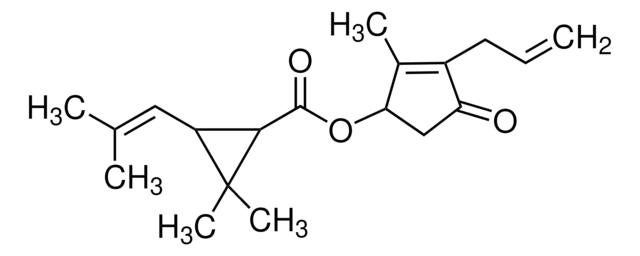Key Documents
45681
Tetramethrin
PESTANAL®, analytical standard
About This Item
Polecane produkty
klasa czystości
analytical standard
Poziom jakości
linia produktu
PESTANAL®
okres trwałości
limited shelf life, expiry date on the label
metody
HPLC: suitable
gas chromatography (GC): suitable
Zastosowanie
agriculture
environmental
format
neat
ciąg SMILES
C\C(C)=C\C1C(C(=O)OCN2C(=O)C3=C(CCCC3)C2=O)C1(C)C
InChI
1S/C19H25NO4/c1-11(2)9-14-15(19(14,3)4)18(23)24-10-20-16(21)12-7-5-6-8-13(12)17(20)22/h9,14-15H,5-8,10H2,1-4H3
Klucz InChI
CXBMCYHAMVGWJQ-UHFFFAOYSA-N
Szukasz podobnych produktów? Odwiedź Przewodnik dotyczący porównywania produktów
Zastosowanie
Informacje prawne
Hasło ostrzegawcze
Danger
Zwroty wskazujące rodzaj zagrożenia
Zwroty wskazujące środki ostrożności
Klasyfikacja zagrożeń
Acute Tox. 3 Inhalation - Acute Tox. 4 Oral - Aquatic Acute 1 - Aquatic Chronic 1 - Carc. 2 - STOT SE 2 Inhalation
Organy docelowe
Nervous system
Kod klasy składowania
6.1C - Combustible acute toxic Cat.3 / toxic compounds or compounds which causing chronic effects
Klasa zagrożenia wodnego (WGK)
WGK 2
Środki ochrony indywidualnej
Gloves
Wybierz jedną z najnowszych wersji:
Masz już ten produkt?
Dokumenty związane z niedawno zakupionymi produktami zostały zamieszczone w Bibliotece dokumentów.
Klienci oglądali również te produkty
Nasz zespół naukowców ma doświadczenie we wszystkich obszarach badań, w tym w naukach przyrodniczych, materiałoznawstwie, syntezie chemicznej, chromatografii, analityce i wielu innych dziedzinach.
Skontaktuj się z zespołem ds. pomocy technicznej

